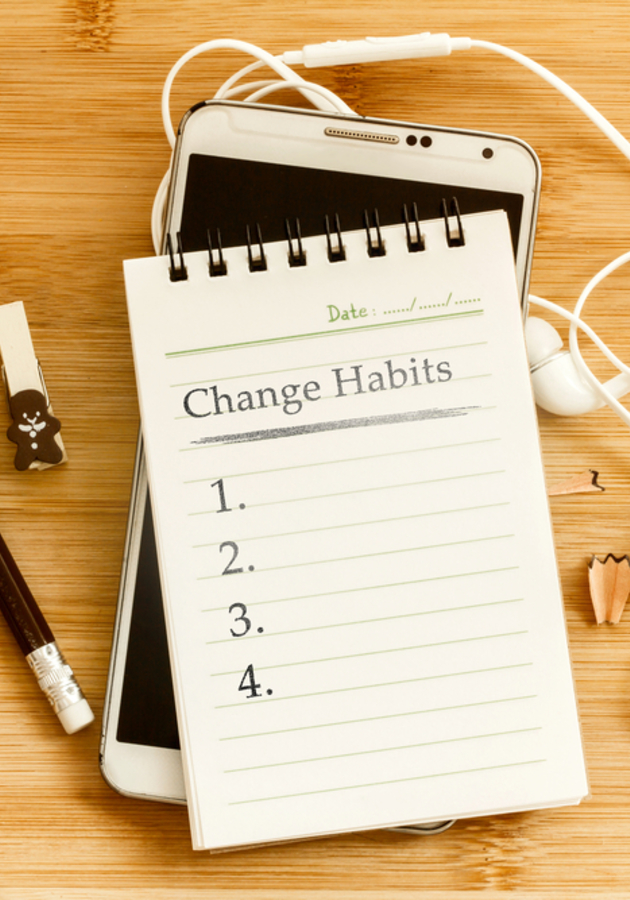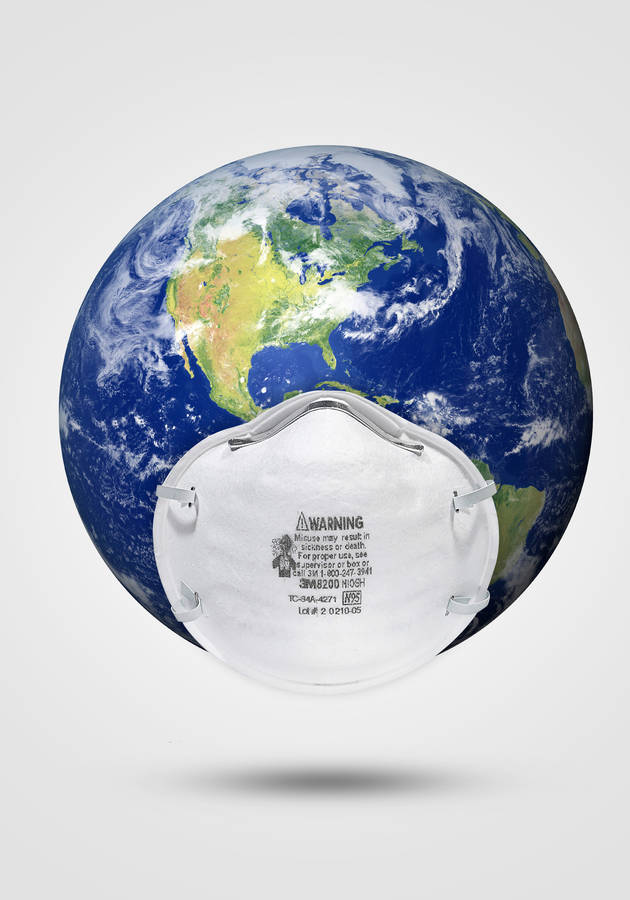The average person checks their phone between 30 and 150 times a day. Eight out of 10 smartphone owners have their first smartphone session within 15 minutes of waking up. Perhaps most surprising, one in three people would rather give up sex than lose their cell phones! “Face it,” says bestselling author and respected lecturer Nir Eyal, “we’re hooked.” That last word, not incidentally, serves as the title of Eyal’s 2014 book, which is not about our addiction to technology and how to overcome it, but about the technology of addiction and how companies produce it. It is, essentially, a book-length answer to one all-important question: “What makes some products so habit-forming?” Well, get ready to discover yourself!
The anatomy of habits
Most cognitive psychologists define habits as “automatic behaviors triggered by situational cues” or, even simpler, as “things we do with little or no conscious thought.” By some estimates, nearly half of our daily actions are habitual. This should surprise nobody, since habits are the most efficient way our brain learns complex behaviors. Once the neocortex decides it has found a satisfactory solution to a problem, it codifies it in a series of steps, and sends the behavioral pattern to the basal ganglia, an ancient part of the brain where involuntary actions are stored. Now, whenever a familiar situation or a recognizable problem appears, the basal ganglia automatically activates the preconditioned response associated with that problem. In the meantime, the neocortex can focus its attention on other things and acquire new behavioral patterns.
In the words of Eyal, “Many of our daily decisions are made simply because that was the way we have found resolution in the past. The brain automatically deduces that if the decision was a good one yesterday, then it is a safe bet again today and the action becomes a routine.” The problem is self-evident: whereas situations and needs change, habits don’t. Consider nail biting, for example. Initially, it must have started for a reason: a person wanted to remove an unattractive or troublesome hangnail. The action, unsurprisingly, brought that person some kind of relief which is why the neocortex remembered it as a great solution to the problem of stress and stored it as such in the basal ganglia. For the same reason, the next time said person felt overwhelmed by the pressures of their daily life, they automatically began biting their nails.
The more one bites their nails, the more their brains are certain it’s the right solution to a problem. In other words, the longer you practice a certain habit, even when it’s a really bad one, the harder it is to change it. It’s a vicious circle – habits are hardwired in our brains as solutions to existing problems even when they become problems themselves. Knowing this, most of today’s companies are less interested in creating products for prospects than in creating habits in customers. “Companies increasingly find that their economic value is a function of the strength of the habits they create,” writes Eyal. “In order to win the loyalty of their users and create a product that’s regularly used, companies must learn not only what compels users to click but also what makes them tick.”
The economic value of habits
As of April 2021, more than 2.7 billion people had downloaded Candy Crush Saga, one of the highest-grossing and most-played mobile apps of all time. The game is not particularly innovative (similar games have existed for decades) nor is it unique (there are thousands of similar games currently available). What has made the game “a goldmine” for its developers was its “freemium” business model and our psychological vulnerabilities.
Namely, everyone can play Candy Crush Saga for free, but paying customers can progress more quickly by getting extra lives or getting past difficult levels without much effort. In other words, the game is designed to be a source of fun for a while, only to become a source of anxiety afterward. At this point, if you want to recapture the fun (and your entire body will want that) you can either try really hard and lose countless hours, or merely pay one or two dollars. Many people choose the latter. Several times over.
Unsurprisingly, that’s the most common business model video games use today. Developers produce free-to-play games which, in turn, are designed to produce habits in the brains of users, which are then leveraged to turn these users into paying customers. As usage increases, so does the customer’s willingness to pay. It’s once again the vicious cycle of habits – even when they are bad, the more you repeat them, the less you can resist them. This pattern applies to many other services.
Take Evernote, for example, the popular note-taking and archiving software. Just like Candy Crush Saga, it’s free for everybody, but this free version comes with certain limitations. For a price, you can lift all of them, while adding a few indispensable features, such as a powerful search engine and the option to collaborate. According to Evernote’s former CEO, Phil Libin, only one in 200 users opt to pay for these services after a month of using Evernote. After three years, however, their number rises to about one in 10. After using Evernote for 42 months, a remarkable 26% of customers choose to pay for the app, not despite having used it for free for so long but precisely because of it. Modern businesses aren’t built on products; they are built on habits.
Customer lifetime value
Even though it’s not as often used as some of the other acronyms available to modern marketers, CLTV – or customer lifetime value – is certainly one of the most important ones. In Eyal’s words, CLTV is “the amount of money made from a customer before that person switches to a competitor, stops using the product, or dies.” Credit cards, for example, have a very high CLTV, since customers tend to stay loyal for a very long time, if not their entire lives. Consequently, credit card companies are willing to spend a lot of money acquiring new customers, which is why you receive so many promotional offers. It is your potential CLTV that justifies such a large investment.
Needless to say, habits and CLTVs are interconnected: the longer and more frequently you use a certain product, the higher your potential CLTV. In fact, this link is one of the reasons why many new innovations fail – simply put, knowing that old habits die hard, companies do everything in their power to keep you addicted. That’s why, in the opinion of John Gourville, a professor of marketing at Harvard Business School, for an innovation to stand a chance, it can’t just be better – it must be at least nine times better than its predecessor. Why? Because only by being that much better can you shake a user out of their old routines.
Case in point, QWERTY keyboards. First developed in the 1870s for typewriters, QWERTY keyboards were designed with commonly used characters spaced far apart so as to prevent frequent jamming of the metal type bars. Modern keyboards have no such physical limitations, and yet the QWERTY design remains the standard. The reason is simple: it costs a lot of money to change the behavior of users. Put otherwise, why would any company start mass-producing laptops with different keyboard layouts when it knows that many people wouldn’t buy them simply because they are used to the original keyboard?
Hence, even though there are far better keyboard layouts than QWERTY – with possibly the best and most efficient one being the Dvorak simplified keyboard – the QWERTY design has remained the standard to this day. Since it’s unlikely we’ll ever find something nine times better than it, it’s quite possible that it will remain the standard for as long as there are traditional keyboards and computers.
The hook model
Based on what we’ve said so far, it’s an understatement to claim that the survival of many products depends on their habit-forming potential. In fact, most of the products and services we use habitually in our lives have been designed to be used in such a way purposefully. Put in an even simpler way, they actively alter our everyday behavior not because of our psychological vulnerabilities, but because their designers use them against us. “Our actions have been engineered,” writes Eyal. How? With the help of the Hook Model, a four-phase process companies use to form habits. Let’s break it down into steps:
- Trigger, the actuator of behavior. Triggers are, simply put, little cues subtly telling us what action we should take. They can be either internal or external. For example, as already analyzed, stress can become an internal trigger for the habit of nail biting. However, it can also become an internal trigger for playing a bullet game of chess or checking your Facebook feed. To move users to take or complete desired actions, companies use external triggers much more often, most commonly the following four types: 1) paid triggers, such as ads or search engine marketing; 2) earned triggers, such as hot viral videos or favorable press mentions; 3) relationship triggers, such as “like” buttons or invitations; and 4) owned triggers such as reminders, newsletters or notifications.
- Action, the behavior done in anticipation of reward. Whatever the trigger, its objective is always the same: to spur some kind of an action. And actions – at least according to Dr. B.J. Fogg – occur only when motivation, ability, and a trigger are present at the same time and to sufficient degrees. If either one is missing, no action will take place. For example, if your phone is buried at the bottom of your briefcase, you may let the call go to voicemail due to inability to immediately reach it. If it’s on silent, you will definitely not answer it due to the absence of the necessary trigger. Finally, if you aren’t motivated enough to talk to the person calling you, you’ll pretend you weren’t around. That’s why companies, in addition to triggers, use two more “basic pulleys of human behavior” to increase the likelihood of an action occurring: a proper, primal motivation, and an ease of execution. So, it’s not only sex that sells – it’s unskillfulness as well.
- Variable reward, the prize that creates the craving. This is what distinguishes the Hook business model from basic feedback loops. Every time a trigger prompts you to do something, it does so with the expectation of a reward. That’s a feedback loop. However, the more repeated the behavior, the more predictable the reward, and hence, the pleasure of the action leading up to it becomes less intense. By adding variable (that is, unexpected or intermittent) rewards to the mix, companies not only revive the activity in the brain’s pleasure center, but they also create a craving. That’s how we get hooked. Variable rewards come in three types: 1) rewards of the tribe, used by Facebook, and driven by our innate connectedness with others, as well as our need to be “accepted, attractive, important and included”; 2) rewards of the hunt, which are urged by our evolutionary need to acquire physical objects and are used by machine gambling; and 3) rewards of the self, which are fueled by our “intrinsic motivation” to gain a sense of competency; this is why video games, based on the idea of “leveling up” and unlocking new powers, work so well.
- Investment, the asset that increases the odds for another pass through the Hook cycle. The more someone invests something in a product, the more valuable that product becomes to them. That “something” can be anything from time and data to effort, social capital or money. Knowing this, companies often invite their users to do some work themselves. As Eyal explains: “Inviting friends, stating preferences, building virtual assets, and learning to use new features are all investments users make to improve their experience. These commitments can be leveraged to make the trigger more engaging, the action easier, and the reward more exciting with every pass through the Hook cycle.” It’s easy to delete your Facebook profile after using it for a week. However, after using it for a year – and after investing so much of your time and effort to finetune your preferences, albums and groups – it seems easier to just keep on using it.
The morality of manipulation
Two factors determine a product’s habit-forming potential: frequency (“how often the relevant behavior occurs”) and perceived utility (“how useful and rewarding the behavior is in the user’s mind over alternative solutions”). The objective of the Hook Model is to make a certain behavior default by nudging the user toward what researchers call “the Habit Zone” – that sweet spot between frequency and perceived utility. To achieve this, most companies dream of creating “painkillers” that is to say, “must-haves” without which life would be more painful. Even so, most habit-forming products actually start as “nice-to-haves” or “vitamins,” and become painkillers only once the accompanying habit is formed. In all honesty, you can easily live without Facebook or Twitter – not to mention Candy Crush Saga – but once you’ve used them for a while, this seems all but unachievable.
By this point it should have become obvious to you that designing habit-forming products is a form of manipulation. Hence, as Eyal says, “Product builders would benefit from a bit of introspection before attempting to hook users to make sure they are building healthy habits, not unhealthy addictions.” To this end, he offers the Manipulation Matrix, “a simple decision-support tool for entrepreneurs, employers and investors” which, rather than giving them an answer to the question “Can I hook my users?,” gives an answer to the question “Should I attempt to?” instead. The “Manipulation Matrix” is nothing more than a four-quadrant chart. Its vertical axis is formed by the two possible answers to the question, “Will the product help users materially improve their lives?” and its horizontal axis is formed by the two answers to the question, “Would I use the product myself?” The four resulting quadrants represent four different types of entrepreneurs and creators.
- Facilitators. Facilitators both use their own products and believe the products make a positive contribution to the well-being of their customers.
- Peddler. Peddlers usually don’t use their own products, despite their conviction they might have some value for their users. Advertising is a good example of peddling.
- Entertainers. Entertainers regularly use their own products, but can’t see how they would materially improve the lives of any user. But, so be it: entertainers are in it for the fun.
- Dealers. Dealers neither use the products they sell nor do they believe anyone would profit from using them. They are the only ones in it just for the money.
As you can discern for yourself, you should always strive to be a facilitator, but you shouldn’t feel that bad even if you are an entertainer or a peddler. However, creating a product you would not use while knowing it doesn’t improve users’ lives at all isn’t entrepreneurship, but exploitation. Unfortunately, it’s not only casino owners and drug dealers that belong to this category anymore. It’s many Silicon Valley startups as well.
Final notes
Described as “a must read for everyone who cares about driving customer engagement" by Eric Ries, the face of the lean startup movement, “Hooked” by Nir Eyal is one of the best books on product design and development you will ever read. It is also one of the more important ones, not the least because it’s honest. Meaning, unlike many similar books, it doesn’t leave ethics out of business and product creation. Bonus points for that!
12min tip
If you want to create a sustainable business in this century of distractions, focus all of your energy on creating habit-forming products or services. As Eyal remarks, amassing millions of users is no longer good enough, because retaining them is actually what makes or breaks a company today.





























